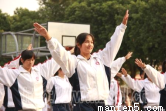��Ŀ����
It is silly_______ him __________others for their mistakes��
A. of; forgiving B. for; not to forgive C. of; not to forgive D. for; forgiving
C �����������⣺����ԭ�±��˵Ĵ��������ġ�����Ϊ�̶����ͣ�It��s+���ݴ�+ of sb. to do sth., ��Ϊ����ij��ij���������ġ����˾������ݴ�����Ϊ��ʾ�˵ġ�Ʒ�ԡ������������ݴʡ�silly���ݴʣ�ɵ�ģ����Ա�ʾ��Ʒ�ԡ�������forgive���ʣ�ԭ�¡�not to do�Ƕ��ʲ���ʽ�ķ���ʽ����ѡ��C��
��ϰ��ϵ�д�
�����Ŀ


